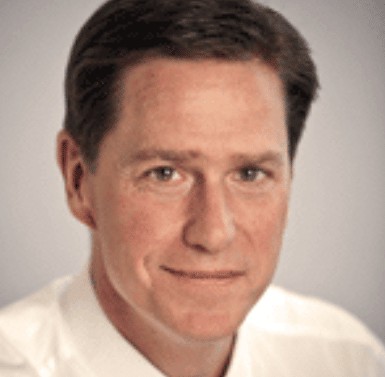
The Audit Bureau of Circulation in the UK will not take action against Wall Street Journal (NSDQ: NWS) Europe for a circulation-boosting programme associated with the resignation of WSJ’s Europe publisher and EMEA managing director Andrew Langhoff recently.
Had it found a flaw, *ABC* UK could have restated 18 months’ worth of WSJ Europe circulation at lower levels – something which would have angered advertisers. It will, however, now review its own standards.
The WSJ programme, which ran from 2008 to 2010, was called Future Leadership Institute and involved companies buying around 15,000 copies per day at less than five cents, supposedly for distribution to university students. The companies also received placement in WSJ Europe as apparent recognition for their support for “future leaders”.
*ABC* originally validated the programme but began investigating in October following Langhoff’s resignation. Langhoff did not resign because of the core programme but because the later promise of special editorial coverage in return for the continued participation of one of the newspaper-buying companies, Executive Learning Partnership, caused a breach of the commercial-editorial boundary to be perceived.
*ABC* statement:
“Following reports in the media about some aspects of the Wall Street Journal Europe’s circulation, *ABC* has carried out a thorough review of the relevant arrangements. The copies in question relate to a contract in force from May 2010 to April 2011 and were reported as Multiple Copy Subscription Sales at below 5% of the basic annual subscription rate. Concerns were raised about whether the net price paid for these copies met the minimum requirement of 1c (Euro), as laid down in the Reporting Standards for International Publications.
“The payment arrangements underlying this contract were complex and at times circuitous but *ABC* has found no clear evidence that these copies should be regarded as not compliant with the Reporting Standards for International Publications.
“Given the questions raised *ABC* has initiated a review of the Reporting Standards governing circulation arrangements of this sort to ensure they fully reflect industry requirements and provide the requisite clarity for all concerned.”
Dow Jones statement:
“We are pleased that the *ABC* UK has concluded its review of the subscription agreement with Executive Learning Partnership (ELP) and determined that The Wall Street Journal Europe’s circulation under that arrangement is valid. That has been our position from the outset.
“The Wall Street Journal Europe has been transparent throughout. The agreement with ELP was shared with the *ABC* UK at the time, and the relevant copies were previously validated. We have already acknowledged publicly that while the copies were properly counted under *ABC* rules, the program itself was unnecessarily complex and not one we will replicate in the future.
“We appreciate the *ABC* UK putting aside the misleading and sensationalistic press coverage from some media outlets and conducting a thorough and dispassionate review.”
The copies concerned were recorded under *ABC*’s Multiple Subscription Copies category and not any of its Bulk categories, as had been reported at the time. Bulk sales typically go to establishments like hotels.
WSJ Europe’s total circulation had fallen by a third in the eight years before it implemented the circulation programme. Under the programme, circulation began to creep up again. At the height, the Multiple Subscription Copies category accounted for 13 percent (17,504) of WSJ Europe’s 74,608 daily average circulation (Jun-Sep 2010).
In 2004, *ABC* UK began counting copies sent to universities toward titles’ Multiple Copy Subscription sales. Until July 2006, *ABC* UK had required publishers to charge a minimum of five percent of its annual rate for Multiple Copy Subscription sales. But it lowered that amount to minimum legal tender per copy – a single cent or penny.
go_datamodule_723571.original_labels = ["00","00","01","01","02","02","03","03","04","04","05","05","06","06","07","07","08","08","09","09","10","10","11"];
Highcharts.setOptions( {"lang":{"numericSymbols":["K","M","B","T"]}} );
(function( $ ) { $(function() { var options_723571 = go_datamodule_723571;
options_723571.series = [{name: 'WSJ Europe total circulation', connectNulls: true, data: [90120, 95111, 100125, 100216, 100769, 94060, 95082, 85159, 87018, 86156, 81211, 87710, 88015, 81445, 87059, 81140, 78230, 74946, 75996, 72005, 73250, 74608, 74800]}]; options_723571.tooltip = { formatter: function() { var series_name = ''; var x_name = this.x;
if ( this.series.name != options_723571.title.text ) { series_name = this.series.name + ': '; }// END if
if ( go_datamodule_723571.hasOwnProperty( 'original_labels' ) ) { x_name = go_datamodule_723571.original_labels[ this.point.x ]; }// END if
return series_name + x_name + ': ' + go_datamodule.add_commas(this.y) + ''; } };
options_723571.plotOptions.formatter = function() { return '' + go_datamodule.add_commas(this.y) + ''; };
options_723571.xAxis.categories = ["00","","01","","02","","03","","04","","05","","06","","07","","08","","09","","10","","11"];
options_723571.chart.events = {}; options_723571.chart.events.load = function( e, chart ) { $(this.legend.allItems).each( function() { var current_height = this.legendSymbol.height; var desired_height = options_723571.legend.symbolHeight;
var diff = desired_height - current_height; var current_y = this.legendSymbol.y;
this.legendSymbol.attr( 'height', options_723571.legend.symbolHeight ); this.legendSymbol.attr( 'y', current_y - diff ); }); };
options_723571 = Highcharts.merge( highcharts_theme, options_723571 );
$( '#highcharts-data-wp-chart-t-render-723571' ).highcharts( options_723571, function( chart ) { } );
highcharts_data_wp_chart_723571 = $( '#highcharts-data-wp-chart-t-render-723571' ).highcharts();
}); })(jQuery);
go_datamodule_723571.original_labels = ["00","00","01","01","02","02","03","03","04","04","05","05","06","06","07","07","08","08","09","09","10","10","11"];
(function( $ ) { $(function() { var options_723571 = go_datamodule_723571;
options_723571.series = [{name: 'WSJ Europe total circulation', connectNulls: true, data: [90120, 95111, 100125, 100216, 100769, 94060, 95082, 85159, 87018, 86156, 81211, 87710, 88015, 81445, 87059, 81140, 78230, 74946, 75996, 72005, 73250, 74608, 74800]}]; options_723571.tooltip = { formatter: function() { var series_name = ''; var x_name = this.x;
if ( this.series.name != options_723571.title.text ) { series_name = this.series.name + ': '; }// END if
if ( go_datamodule_723571.hasOwnProperty( 'original_labels' ) ) { x_name = go_datamodule_723571.original_labels[ this.point.x ]; }// END if
return series_name + x_name + ': ' + go_datamodule.add_commas(this.y) + ''; } };
options_723571.plotOptions.formatter = function() { return '' + go_datamodule.add_commas(this.y) + ''; };
options_723571.xAxis.categories = ["00","","01","","02","","03","","04","","05","","06","","07","","08","","09","","10","","11"];
options_723571.chart.events = {}; options_723571.chart.events.load = function( e, chart ) { $(this.legend.allItems).each( function() { var current_height = this.legendSymbol.height; var desired_height = options_723571.legend.symbolHeight;
var diff = desired_height - current_height; var current_y = this.legendSymbol.y;
this.legendSymbol.attr( 'height', options_723571.legend.symbolHeight ); this.legendSymbol.attr( 'y', current_y - diff ); }); };
options_723571 = Highcharts.merge( highcharts_theme, options_723571 );
$( '#highcharts-data-wp-chart-t-render-723571' ).highcharts( options_723571, function( chart ) { } );
highcharts_data_wp_chart_723571 = $( '#highcharts-data-wp-chart-t-render-723571' ).highcharts();
}); })(jQuery);